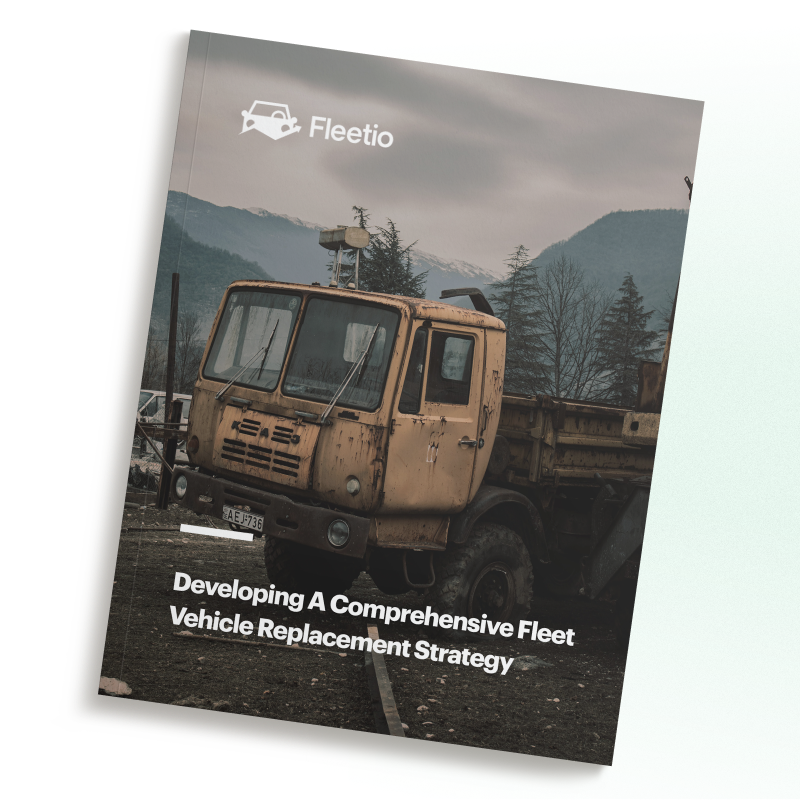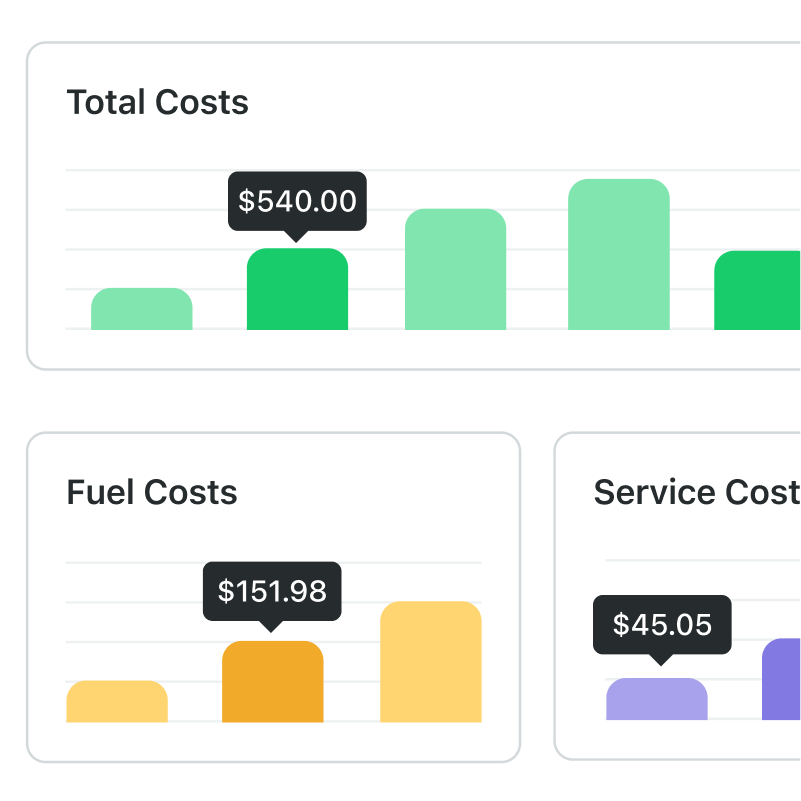5 steps to Calculate Lifetime Value Using TCO
Expanding your fleet should be a careful, data-driven decision for any business, whether you're in the logistics, construction or service industry. It's a strategic move that can lead to increased revenue and market reach. But acquiring new vehicles is not just about making a purchase – it's about making a smart investment.
Nov 8, 2023
6 min read

To ensure that each new vehicle contributes positively to your business, it's essential to consider their total cost of ownership (TCO). By analyzing the TCO of your existing vehicles, you can predict the lifetime value of any new vehicles you buy.
Let’s walk through the process of using TCO to make informed decisions about expanding your fleet.
Understanding TCO: A Comprehensive View of Vehicle Costs
Total cost of ownership is a financial metric that goes beyond just the purchase price of a vehicle. Fleets can use TCO as a tool to account for every vehicle expense associated with owning and operating an asset throughout its entire lifetime.
Costs Used to Calculate TCO
- Purchase Price: This is the most apparent cost and is often the starting point for fleet expansion. It's important to remember that a high purchase price can mean lower operating costs over time, making it a worthy investment despite any initial sticker shock. The opposite is also true – a low purchase price does not always correlate with a satisfactory TCO.
- Fuel Costs: Fuel is consistently one of the most significant expenses for the average fleet. Take into account the vehicle's fuel efficiency, type of fuel and the expected cost of fuel over the vehicle's lifespan.
- Maintenance and Repairs: Regular maintenance is vital for the operation of vehicles on the road. It’s good to maintain estimates of expected maintenance costs, including routine services and unplanned repairs, for every vehicle type in your fleet.
- Depreciation: Vehicles are a depreciating asset, which means they will not hold the value of their initial purchase price as they age. Know the rate of depreciation for your existing fleet assets and apply it to new vehicles to estimate their future value.
- Insurance: The cost of insurance can vary significantly depending on the type of vehicle and the number of vehicles in your fleet.
- Licensing and Registration: These costs are typically annual and should be factored into your TCO calculation.
- Tires: Replacing tires is a common expense for vehicles and is an inevitable occurrence in any fleet. Estimate how often you'll need to replace tires and include this in your TCO.
- Financing: If you're financing the purchase of new vehicles, consider the interest rate and how it affects the overall cost.
- Resale Value: Think about how much you can sell a vehicle for at the end of its service life. A higher resale value can significantly impact the TCO. Pricing can also fluctuate with the market at large, so be sure to keep an eye on any changes in the economy or your industry that might impact resale value.
Make smarter purchases
Want to learn how to create a solid vehicle replacement strategy? Our white paper will walk you through everything you need to know.
Download our free guideHow to Use TCO to Predict New Asset Value
Step 1: Analyze Your Existing Fleet TCO
Before diving into expanding your fleet, it's best to make sure you understand the TCO of your existing vehicles. By analyzing the TCO of your current fleet, you can identify areas where you may be overspending and make necessary adjustments.
Start by collecting data on the various TCO components mentioned above. Use fleet management software like Fleetio to streamline the process, which ensures you have accurate and up-to-date information coming in real time that can paint a clear day-to-day picture of your fleet’s function.
Once you know your existing fleet's TCO, you can use it as a benchmark for evaluating new vehicles.
Step 2: Assess New Vehicle Options
When purchasing new fleet vehicles, don’t just focus on the purchase price – as we mentioned earlier, sticker shock can blind you to the true lifetime value of a purchase. Instead, look at the complete TCO for each potential addition to your fleet. Research different makes and models to find vehicles that are known for their fuel efficiency and reliability, and consider consulting with manufacturers, dealerships and industry experts to gather information about maintenance costs, depreciation rates and other relevant expenses.
Step 3: Calculate the TCO for New Vehicles
With the TCO data for your existing fleet and the information you've gathered about new vehicles, you can now calculate the TCO for each potential addition. This will allow you to make informed decisions and compare the lifetime costs of different options.
There are many resources online you can utilize to help you calculate TCO of new vehicles. Edmunds.com is a common resource for consumers to see the TCO of many new and used vehicle models, and utilizing online forums to learn more from other consumers about vehicle performance, recalls and other information can lead to a better understanding of how the vehicles will function over time.
Pro-Tip
By assessing your existing fleet's TCO, researching new vehicle options and calculating the TCO for potential additions, you can make data-driven decisions that will lead to a more profitable and efficient fleet.
Step 4: Project the Lifetime Value
Once you've calculated the TCO for your new vehicles, it's time to project their lifetime value. Consider the expected lifespan of each vehicle and calculate the total cost over that period against your projected earnings and usage over the same time period. This will give you a clearer picture of the financial impact as well as value add of including these vehicles in your fleet.
It’s also good to consider the potential revenue these new vehicles could generate and how they contribute to your business goals, especially if the vehicles you’re buying are a net new asset in your fleet and not just a replacement for an offloaded vehicle.
Step 5: Decision-Making and Monitoring
With TCO calculations and lifetime value projections in hand, you can now monitor TCO and value as your new assets age in your fleet, as well as make an informed decision about expanding your fleet in the future. Remember, the goal is to maximize the ROI on your new vehicles, ensuring that they contribute positively to your business, so it’s important to continue to monitor the TCO of your entire fleet using fleet management reporting software like Fleetio. Regularly review and update your TCO calculations with fleet management to make necessary adjustments and optimize your operations.
Expanding your fleet is a significant step that can drive growth for your business, but it's essential to make informed decisions to ensure that new vehicles contribute positively to your bottom line. Using TCO as a tool to analyze the costs associated with owning and operating vehicles can help you predict the lifetime value of new fleet additions.
Easier TCO Tracking
The best way to keep track of your fleet costs is with fleet management software. See how Fleetio can help you better understand your TCO.
Get a free demo
Senior Fleet Content Specialist
As a Senior Fleet Content Specialist at Fleetio, Peyton explores the voices and experiences that shape fleet operations. She focuses on how fleet professionals adopt technology, improve efficiency and lead their teams to bring clarity and context to the challenges happening across the industry.
View articles by Peyton PanikReady to get started?
Join thousands of satisfied customers using Fleetio
Questions? Call us at 1-800-975-5304

